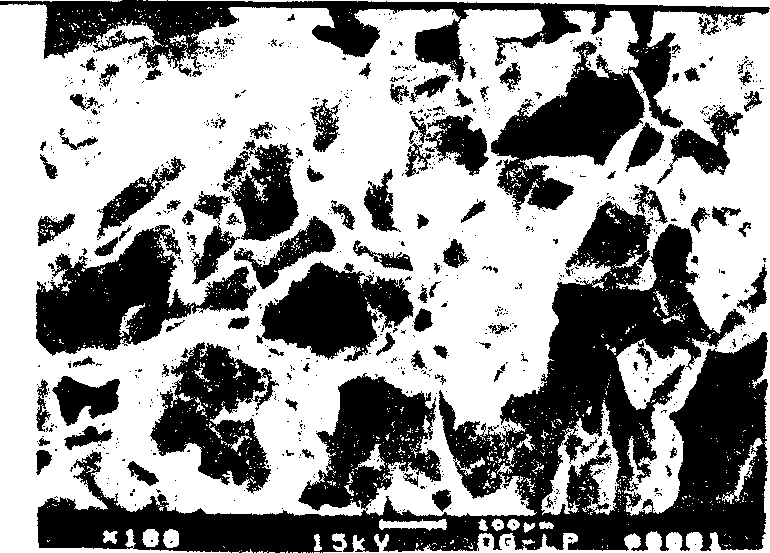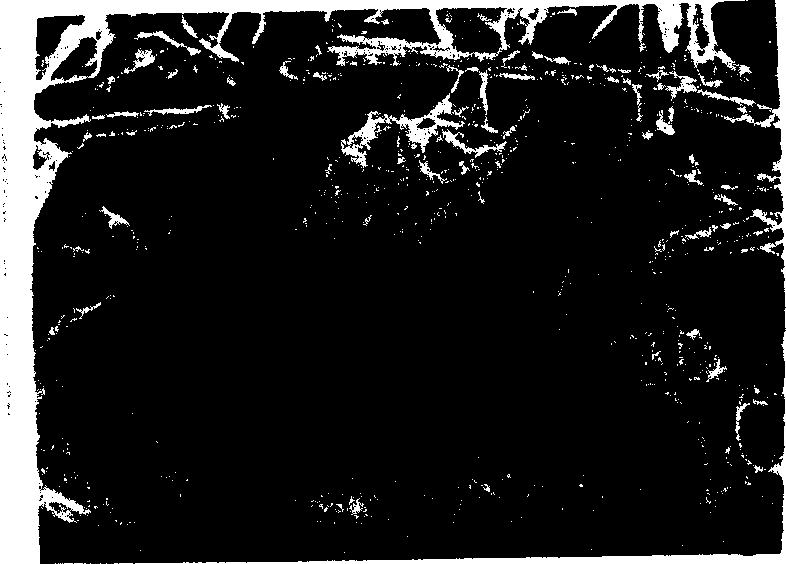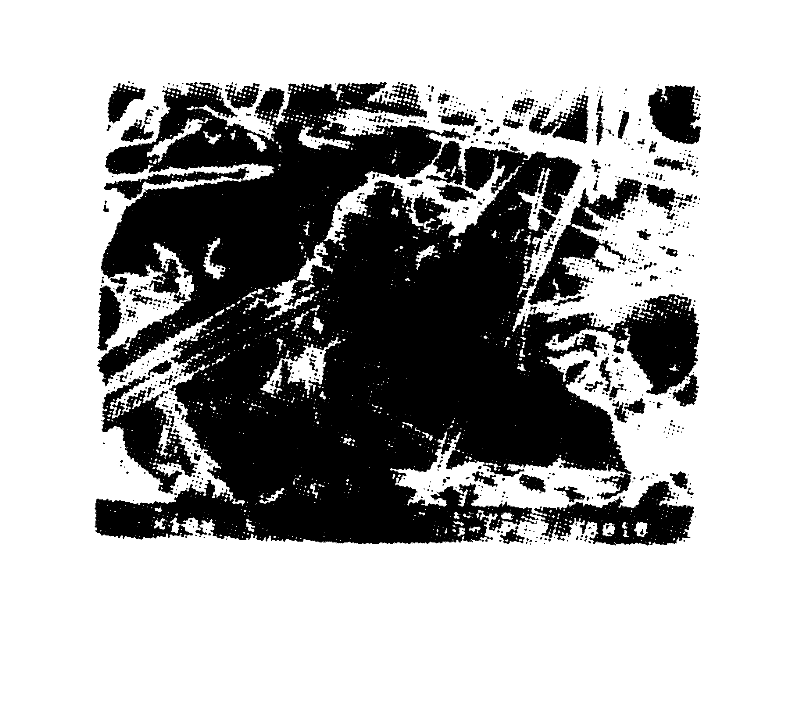Cartilage tissue engineering scaffold composite material
A composite material and cartilage tissue technology, applied in the field of bone materials, can solve problems such as long degradation time, easily deformed plant cells, damage, etc.
- Summary
- Abstract
- Description
- Claims
- Application Information
AI Technical Summary
Problems solved by technology
Method used
Image
Examples
Embodiment Construction
[0016] A CPPf / PLLA(50 / 50) cartilage tissue engineering scaffold composite material was prepared.
[0017] The PLLA1.0g that average molecular weight is 100,000 is dissolved in the chloroform solvent of 10ml, and the PLLA solution that makes concentration is 10%; Add the CPPf1.0g that length is 10mm, and stir, obtain CPPf / PLLA (50 / 50) solution; then add 18.0g of Nacl particles with a particle size of 100-300um, stir evenly and pour into a mold for casting; the molding is demoulded after natural volatilization at 20-30°C for 56 hours, and then vacuumed at a degree of 1×10 -3 Vacuum in a vacuum desiccator in Torr for 24 hours to remove residual chloroform in the molded product; soak the molded product in secondary distilled water for 72 hours, during which the distilled water is replaced every 6 hours, and then dried at room temperature for 24 hours hours, and finally vacuum-dried for 48 hours to prepare a high-porosity CPPf / PLLA (50 / 50) cartilage tissue engineering scaffold com...
PUM
 Login to View More
Login to View More Abstract
Description
Claims
Application Information
 Login to View More
Login to View More - R&D
- Intellectual Property
- Life Sciences
- Materials
- Tech Scout
- Unparalleled Data Quality
- Higher Quality Content
- 60% Fewer Hallucinations
Browse by: Latest US Patents, China's latest patents, Technical Efficacy Thesaurus, Application Domain, Technology Topic, Popular Technical Reports.
© 2025 PatSnap. All rights reserved.Legal|Privacy policy|Modern Slavery Act Transparency Statement|Sitemap|About US| Contact US: help@patsnap.com



